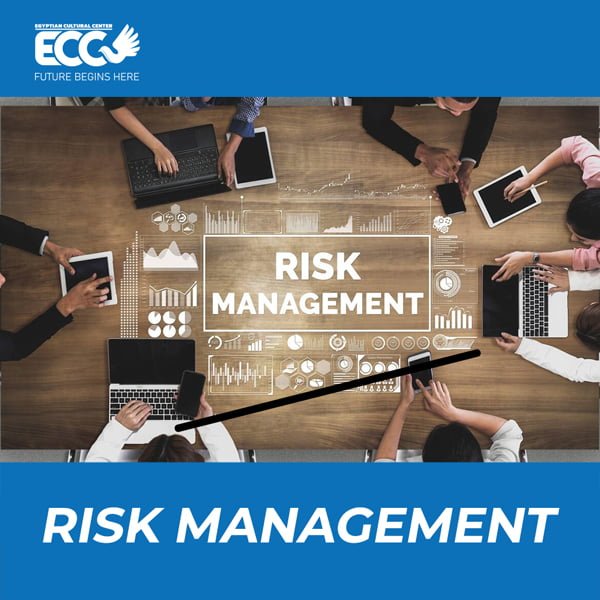The risk that occurs to a project is the difference or gap between actual and estimated profits or cash flows, therefore, the Greater those differences, the greater the risks of the project, but who decides that? how can you estimate those risks, how is their management, and what is the benefit of risk management in general
This is what we will touch on in the next article…
What is risk management?
Risk management is an integrated management system that identifies and evaluates the threats that may be exposed to the organization and work to develop strategies for its management by developing a policy with specific aspects to face the expected risks and their analysis and measurement, identifying the means to confront them and choosing the most appropriate means to achieve the desired goal.
Types of risks
There are two types of main risks facing companies in the business sector, namely:-
- Regular risks or what is known as market risks are produced due to factors affecting the market in general that can’t be avoided or reduced, leading to uncertainty about the return on investment, and are often associated with economic, social, and political conditions such as inflation, interest rate hikes, depression, political instability, economic crises, and so on
- irregular risks are those that affect the number of expected returns from a particular company or sector and do not affect the overall market system, examples of such risks are: administrative risks, the emergence of New competing inventions, advertising campaigns of competitors, changing consumer tastes for a company’s good or service and others
Steps of the risk management process
- Identification of risks
It is not possible to face risks without identifying what they are and knowing their dimensions and effects, but that step requires collecting sufficient data and information about those threats to begin analyzing and confronting them, there are several ways to do this, such as brainstorming with the team or stakeholders, communicating with experienced individuals and interviewing them to collect information, or analyzing the functional safety of JSA by cascading the project into several activities and studying each of them separately and so on
- Risk analysis and assessment
After identifying the risks facing the organization the step of analyzing and evaluating them is the next one, whether quantitative or qualitative analysis. It is also assessed by four main factors: the probability of occurrence, impact, time frame, and the state of risk response activities, where an impact degree is determined for each risk, and therefore if the impact degree increases, this indicates it is a high-risk step, where you can determine how the risks affect your business plan and budget. Project management programs can analyze risks by monitoring the project
- Response and risk control
Responding to risks involves two main tasks:
Planning how to respond to threats, implementing and monitoring action plans prepared to respond to risks
Despite the many ways in which risks can be faced according to the organization’s policy and strategy at that time, there are four main types of risk response, namely
- Risk avoidance: avoid entering or participating in any activities or areas that may carry a danger or threat to the organization.
- Risk reduction or prevention: trying to contain or prevent the aggravation of the consequences of risks or seeking to reduce them as much as possible as an alternative to trying to prevent them.
- Retention: that is, accepting the existence of risks and starting to deal with them as a fait accompli while trying to reduce their effects to an acceptable degree
- Sharing and impact transferring: attempt to share risks or share them, which reduces the costs of facing them through insurance or outsourcing
The importance of risk management
- Protection of the organization’s resources
Risk management helps allocate and protect the organization’s resources from hacking or theft, whether it is equipment, supplies, or even information.
- Business continuity
Ensuring the existence of internal controls and rules that prevent exposure to threats and ensure dealing with any type of risks at the time that happened
- Achieving goals and increasing profit, Achieving goals by eliminating and reducing activities that do not bring the desired benefit and reducing the time spent on long procedures
- Discovering usable information
Risk management helps to collect important information that provides useful insights which can be applied to situations that may arise even after the development of the plan
- Customer satisfaction
Customers’ confidence in the organization increases with a clear risk management strategy, where they feel safe and the organization’s ability to consistently provide all the services promised
All of The above risk management strategies work to protect the organization as a whole from unexpected threats and risks, as preparing for several scenarios contributes to facing any difficulties the company may face and allows it to get out of this impasse. Thus, to ensure the success of your project, you need to determine how you will deal with possible risks to identify, mitigate or avoid problems when you need to do so.


